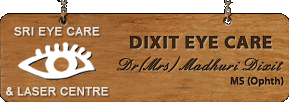Biometry
Biometry, or Biometrics, is a division of Biology that uses statistical applications for conducting the study of living things. Biometric tools are widely used in studying growth, biological similarities and differences, authentication of individuals based on his/ her behavioral and physiological characteristics.
The measurement of the various dimensions of the eye and of its components and their interrelationships. The axial length and the corneal curvature are essential measurements to predict the correct lens power of an intraocular lens. There are several biometers which are used prior to cataract surgery some based on ultrasound, others on optical systems. A commonly used optical biometry method called partial coherence interferometry (PCI) (e.g. uses infrared laser light and provides a measurement of axial length, lens thickness, anterior chamber depth and corneal curvature). It also includes software for the calculation of an intraocular lens power using a selection of formulae. It is not appropriate for eyes with dense cataracts or severe corneal oedema, in which case ultrasonography is preferable
A-scan is an amplitude modulation scan. It gives the information in the form of one dimensional. it is used to detect the presence of flaws in the materials. A-scan ultrasound biometry, commonly referred to as an A-scan, is routine type of diagnostic test used in ophthalmology. The A-scan provides data on the length of the eye, which is a major determinant in common sight disorders. The most common use of the A-scan is to determine eye length for calculation of intraocular lens power. Briefly, the total refractive power of the emmetropic eye is approximately 60. Of this power, the cornea provides roughly 40 diopters, and the crystalline lens 20 diopters. When a cataract is removed, the lens is replaced by an artificial lens implant. By measuring both the length of the eye (A-scan) and the power of the cornea (keratometry), a simple formula can be used to calculate the power of the intraocular lens needed. There are several different formulas that can be used depending on the actual characteristics of the eye.
The other major use of the A-scan is to determine the size and ultrasound characteristics of masses in the eye, in order to determine the type of mass. This is often termed quantitative A-scan.

 3i Global Inc.
3i Global Inc.